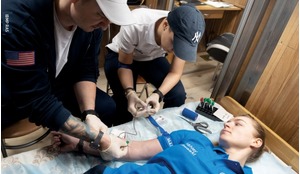The concept of a ‘Moon village’, introduced in 2016 by Director General of the European Space Agency, Jan Wörner, isn’t an active project or a space programme in the traditional sense. Rather, it represents an intention or vision for spaceflight and the exploration of the Moon through international cooperation. The term ‘village’ describes an open and inclusive community where interested parties can join forces to share interests and capabilities, including astronautical activities and robotic endeavours for scientific, technical, commercial and tourism activities. The architect Cedric Price was once quoted as saying “Technology is the answer, but what was the question?”. In terms of how we, and especially how young people, want to live in the future, both the question and its outcome could affect life for the citizens of Earth for centuries to come.
Acooperative, inclusive and sustainable approach was the starting point for the 2018 ‘Moon Village design studio’ at the Vienna University of Technology in Austria. During the intensive three-month course, 35 Master’s students developed hypothetical scenarios for a future Moon village.
The studio was supported by the European Space Agency (ESA) and the Austrian Federal Ministry for Transport, Innovation and Technology (bmvit) and experts from space-related organisations supported the studio work with theme-specific lectures and workshops. Based on the students’ initial political and societal visions for a future Moon village, they developed individual architectural projects, incorporating the technical, environmental and operational requirements of building and living on the Moon.
The idea of the Moon village has gained momentum, leading to international discussions and activities, and the development of new networks such as the Vienna-based NGO, the Moon Village Association (MVA).














